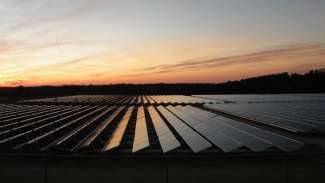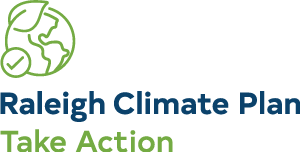- Carry a reusable water bottle instead of buying new plastic bottles every day.
- Try taking the bus, riding your bike or walking to work!
- Recycle right, recycle more, recycle often
- Learn about home weatherization and see what you can do to reduce your home energy use (and costs!) Need financial help with weatherization? Check out the NC Home Weatherization Assistance Program.
- Support pollinators and local wildlife by planting native wildflowers
- Start composting your food waste. Eat more plants, as they have a smaller environmental impact than animal products. You could prepare a meal with friends and family using local vegetables or start having meatless Mondays
- Prepare your home and your family for emergencies and disasters
- And so much more!
Small changes add up to big impacts over time. The City of Raleigh has resources and staff to help Raleigh residents adopt a more sustainable lifestyle.
- Changing the type of energy we use. This means transitioning our energy supply from fossil fuels to renewable sources like solar and wind power. This creates a supply of energy to support human activities and does not generate emissions that contribute to climate change.
- Reducing the amount of energy required to do something. This is known as energy efficiency: doing the same work with less energy. An example of this is sealing air leaks in a house to reduce how much heated or cooled air escapes the building and reduces the amount of energy it takes to heat or cool it over time. To reduce the energy required for producing your food, consider a diet with less meat and dairy and more locally grown fruits and vegetables.
- Doing fewer things that emit greenhouse gases. This is known as energy conservation. An example of this is cycling or walking instead of driving to reduce tailpipe emissions, which are a big contributor of greenhouse gases.
- Creating and preserving carbon sinks. This includes tree planting and green space preservation to take advantage of natural sources of carbon sequestration.



